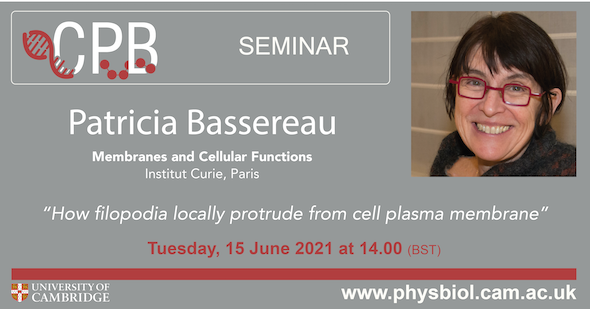
Patricia Bassereau
Institut Curie, Paris
How filopodia locally protrude from cell plasma membrane
15 June | 14:00 (BST) | Zoom
Abstract
Cell membranes are highly deformable and can be strongly curved. For instance, cells extend thin and dynamic tubular plasma membrane protrusions for sensing their surroundings and for their motion called "filopodia". These finger-like protrusions are formed by actin parallel filaments pushing against the membrane while they polymerize. How actin is locally recruited to exert this pushing force has been debated for a long time. With in vitro reconstitution and mechanical experiments on liposomes, we have shown that the unique capability of the curved I-BAR protein IRSp53 to couple with membrane curvature induces its clustering on membranes, thus the local recruitment of actin polymerases and eventually actin growth. However, a pivotal IRSp53 activation step is necessary in vivo to precisely regulate the time and localization of filopodia growth.

